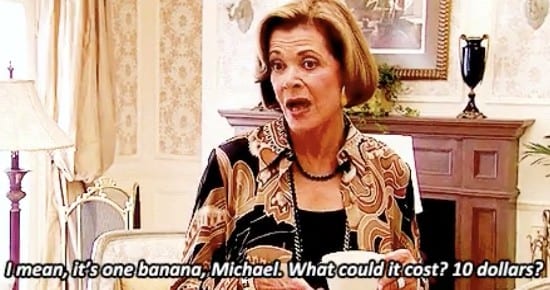I’ve been advocating — requesting, demanding — a massive public works effort to repair America’s aging infrastructure because 1) that infrastructure is in desperate need of repair, and 2) we have 14.6 million jobless Americans who could really use some productive work.
But from what I understand, there’s another reason this is logical, effective, efficient, wise and necessary right now: Infrastructure is on sale.
I’m not an economist, and I’d like to hear from economists as to whether the following is an accurate or helpful way of thinking about this, but here is how I understand our situation.
Remember the Giant Pool of Money? Well, it’s still spooked from its glimpse into the abyss of a narrowly averted global depression and it’s looking for a safe place to hide.
The preferred sanctuary for all that money right now is government securities — federal American government securities in particular. The Giant Pool of Money right now is desperately trying to shove as much of that money as it can into the hands and pockets of Uncle Sam.
Think of it like a run on a bank in reverse.
The Bank of America — oh, wait, that name’s no good — the Uncle Sam Building & Loan is struggling. Revenues have dropped off sharply due to a severe economic downturn. Things are shaky.
Then Monday morning, you go to open the doors — you’re the bank manager in this analogy, I’m picturing you as Jimmy Stewart — and there’s a huge mob waiting outside. They’re angry and agitated and you can sense the collective panic. They won’t take “no” for an answer.
But these aren’t your account holders and they’re not clamoring to make withdrawals. These are new would-be depositors and they’ve brought their money with them — huge wads and bags full of the stuff. They’re insisting, demanding that you take their cash and put it somewhere safe.
Lest you think this is an unadulterated Good Thing, remember how bank balance sheets work. New deposits aren’t just cash on hand, they’re also liabilities, expenses. Depositors are people to whom you owe interest. You know there’s no way you could accommodate all of these people, no way you could afford to take all of their money and pay the 3 percent interest you’ve been advertising.
So you climb up onto the counter and shout to get everybody’s attention. “Listen! Listen to me everybody!” you shout. “I can’t take your money — I can’t afford to pay 3 percent on so many new deposits.”
“We don’t care!” They shout back. “Pay us 1 percent — or 0 percent! Just take our money!”
“We’re scared to put it in the stock market!” someone yells.
“We’re scared to put it in real estate!” shouts another.
They begin chanting, “Take our money! Take our money!”
You can talk all you want about belt-tightening austerity and a prudent caution that advises against taking any more deposits — i.e., borrowing any more money, even if that money is essentially interest-free — but that’s not really an option just now, standing on that counter, surrounded by an angry mob shoving money at you and refusing to leave until you take it. This is why economists speak of “market forces” rather than market “requests.” Like it or not, you’re taking this money.
So now, on the one hand, your shaky financial situation hasn’t improved. Depleted revenue is still putting you in the red and you’ve just taken on the additional liability of the marginal interest payments owed to these new depositors.
But on the other hand, you’re now swimming in cash and you have the opportunity to invest that cash to generate the revenue that can put you back in the black.
OK, we’re done with the bank analogy now, so if, like me, you’ve been picturing this as filmed in black-and-white, you can now return to technicolor.
The United States is flush with low-interest cash from the Giant Pool of Money. Yes, that cash will one day have to be repaid, but right now what it means is the government has the opportunity to invest it in ways that will help to generate future revenue, which is to say in ways that create jobs. And if it does so, if the government invests this money in job-creation, then the future revenue will exceed the low interest owed back to the Giant Pool. A government is not really like a business or a bank or a household, but to the extent that it can be compared to such things, what this all means is the government has the chance to turn a profit.
And if we’re really smart about this, we can put this money to work not just creating jobs, but building and rebuilding the infrastructure that makes long-term, sustainable economic growth possible. The Giant Pool of Money is willing to accept next-to-nothing interest for shelter in government securities, so, again infrastructure is on sale. All that stuff we desperately need to repair and rebuild, all that maintenance we’ve been putting off for decades — this is the chance to attend to all of that at low, low, limited-time offer prices.
If you’re tempted to regard this massive public effort as “socialistic” or as “big government” meddling, keep in mind that this is all brought about by capitalists freely choosing to shove their money into government securities instead of investing it in stocks or any of the other private-sector options they have available. Those capitalists are investing their money in the government in the expectation that the government will, in turn, put that money to work in profitable and productive ways — this is what the free market is expecting, requesting and requiring the government to do. This is capitalism — the free market in action.
In normal times — when the unemployment rate is hovering down closer to 4 percent rather than an unsustainable 10 percent — this kind of massive government investment might be inefficient or intrusive, but that’s not the case here. The resources the government would be putting to work here would not be taken from some other private productive use. The resources involved — both the money and the workers — are idle and unproductive at the moment. We need to put that money and those people back to work, and a massive commitment to repairing our infrastructure would do just that.












